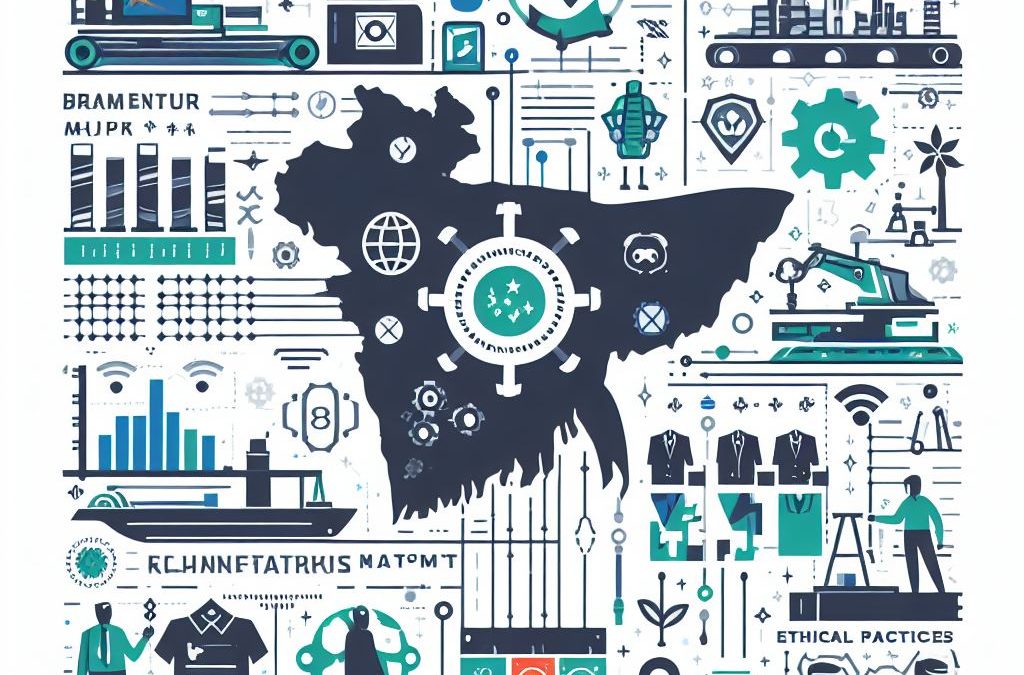Introduction
In the competitive world of manufacturing and production, reliability and consistency are key differentiators. High-quality output, reliably and consistently produced, ensures customer satisfaction, builds a strong brand reputation, provides a competitive advantage, and significantly reduces after-sales service costs.
The Need for Rigorous Quality Control to Ensure Consistency
Garment manufacturing is not immune to defects. From open seams to incorrect thread tension and size misgradations, numerous issues can slip through, emphasizing the need for rigorous quality control methods.
Quality control isn’t a singular measure but a multi-step process that spans:
- Testing Methods: Shrinkage, colorfastness, and chemical testing provide objective data to verify quality standards are consistently met.
- Regular Inspection: Overseeing incoming fabrics, cutting quality, sewing, and finishing through statistical analysis of random samples maintains consistency.
- Automated Inspection: Where feasible, automated inspection reduces human errors. Proper training for manual inspectors is also essential.
- Use of Technology: The integration of barcode scanning, sensors, and other tech advancements can enhance consistency in quality control.
The Role of Quality Management Systems in Producing Consistent Output
The absence of structured quality management systems in many factories often leads to variability in output and an inability to replicate consistent results. Implementing structured Quality Management Systems is crucial.
Key components include:
- Adoption of Systems: Frameworks like 5S, Six Sigma, and ISO certifications demonstrate a factory’s commitment to quality. Adoption needs to be organization-wide rather than ad-hoc.
- Monitoring: Regular internal audits and monitoring of quality metrics provide visibility and accountability.
- Training: Recognition and training at individual and team levels ensure standards are adhered to consistently over time.
Implementing structured Quality Management Systems is crucial. For an in-depth look at how quality control impacts the larger landscape of Bangladesh’s apparel industry, refer to our article about Quality Control and Manufacturing Excellence in Bangladesh’s Apparel Industry.
Impact of Capacity, Inventory, and Lead Time Management on Reliable Delivery
Capacity, inventory, and lead time management play a vital role in ensuring that orders are fulfilled reliably on time. These factors are interlinked, influencing each other and the overall production process:
- Production Capacity: The manufacturing ability of a factory directly impacts order fulfillment. Overcapacity can lead to wasted resources, while undercapacity can result in unfulfilled orders.
- Availability of Inputs: Timely access to essential inputs like fabrics and accessories is paramount. A delay in input availability can create a domino effect, disrupting the entire production process.
- Lead Time Management: Efficient lead time management prevents bottlenecks, ensuring that the production process runs smoothly.
To enhance reliability, businesses can invest in supplier improvement programs that transfer expertise in lean manufacturing, demand forecasting, and capacity planning. Strategic inventory management and efficient material planning via MRV and ERP systems also boost reliability in sourcing materials on time.
Risk Management for Uninterrupted Production
Reliable production also depends on mitigating risks that can disrupt the manufacturing process. These risks can range from weak infrastructure like roads and ports to political instability resulting in unrest or strikes. High tariffs and trade barriers can also limit competitiveness and growth of exports, impacting reliability.
To overcome these challenges:
- Collaboration between policymakers, buyers, and manufacturers can create effective solutions to infrastructure and political issues.
- Transparent, collaborative relationships between buyers and factories can foster trust and joint ownership of sustainability, reducing the impact of external risks.
Enhancing Productivity and Quality Consistency through Strategies
Improving productivity and ensuring quality consistency are achievable through strategic implementation of training programs, adoption of technology, and process improvements. These strategies include:
- Employee Training: Comprehensive training programs can equip workers with the necessary skills, resulting in decreased defect rates.
- Technology Adoption: Leveraging advanced technologies can streamline processes and increase productivity.
- Process Improvements: Lean production techniques can enhance efficiency, reducing waste and optimizing resources.
Moreover, establishing standardized work methods through Standard Operating Procedures (SOPs) fosters consistency and reduces the likelihood of errors. The benefits of automation can be harnessed to minimize human errors and maintain steady work flows. Initiatives such as quality circles and reward programs can foster a culture of quality and continuous improvement. Encouraging employee feedback on improvements also contributes to building engagement and consistency.
Ensuring Compliance and Monitoring for Reliable Standards
To ensure adherence to standards reliably and consistently, implementing a system of compliance and monitoring is crucial. Certifications related to safety, environmental sustainability, and social compliance provide external validation. They demonstrate a company’s commitment to maintaining high standards.
Regular compliance audits help identify and remediate issues, demonstrating the seriousness in maintaining standards consistently. Moreover, transparent reporting of audit results and subsequent remedial actions can foster trust with customers and other stakeholders.
Government Support and Policy Changes for Sustainable Improvements
Sustainable improvements in reliability and quality consistency cannot occur without adequate government support and conducive policy changes. Supportive infrastructure, favorable trade policies, establishing backward linkages and industries all contribute to a reliable ecosystem for garment manufacturing.
Government incentives for factories that demonstrate robust quality controls and adherence to compliance standards also encourage consistency. Collaboration between policymakers, buyers, and manufacturers plays a crucial role in achieving these improvements.
Conclusion: The Path to Reliable and Consistent High-Quality Apparel
In the complex landscape of garment manufacturing, reliability and consistency are not mere buzzwords, but vital elements of delivering high-quality apparel. Adopting rigorous quality control, implementing structured Quality Management Systems, managing production capacity and lead times, mitigating production risks, adopting strategic productivity measures, and enforcing compliance are all integral parts of this process.
At Brandex Sourcing, we take these considerations seriously, ensuring that we deliver the highest quality apparel consistently. Our commitment to the environment, worker health and safety, and stringent quality control aligns with the values we uphold as a responsible manufacturer.
If you’re looking for a reliable apparel manufacturing partner that prioritizes quality, sustainability, and consistency, reach out to us for a quote. Let us help you make your mark in the world of high-quality apparel.

